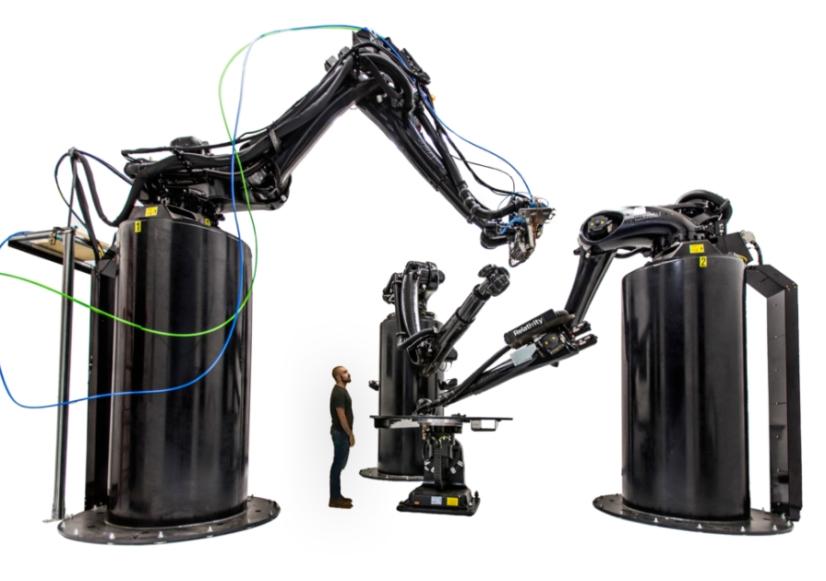ROBOT VS. CNC-MACHINE
For big scale hybrid manufacturing are two different machine setups practicable. One is the CNC-machine working in a closed frame with a numerical control . They are controlled by GCode and MCode. 3D-Printers and Milling-machines are mostly CNC-machines working with stepper or servo-motors. In both methods, the machines are very precise depending on the quality of the construction and the motors. Also in a big scale CNC-machines are very accurate and used for CNC-milling operations for example in the automotive industry. The other machine setup is the robot arm, normally used in the automotive industry for repetitive tasks like pick&place operations. In terms of automation tasks the robots are quiet accurate (under 1mm ) but in terms of motion, means moving on a giving path perfectly like CNC-machines do is very difficult for robot arms. A robot is working with inverse kinematics trying to follow a path in the TCP (Tool center point ) by informing all his joints to rotate in the right angle and direction. But the are still used for additive manufacturing and CNCmilling but with less accuracy then typical CNCmachines . But therefore with much more degrees of freedom and the ability to reach every point in the robot range out of different directions . And also robot companys like Kuka have still noticed these new fields for ther robots and developed a motion package called Kuka.CNC with much more accuracy in motion on a path working with standard CNC-Code. + + + +
6-Axis Freedom and more if needed Costs around 200.00 â‚Ź Needs less space than a CNC-machine Community of developing endeffectors and software for parametric control and more
-
Less Accuracy then rigid CNC-machine more experimental and mostly not available as a full package out of the right hardware and software . Image Source: KUKA Systems





























